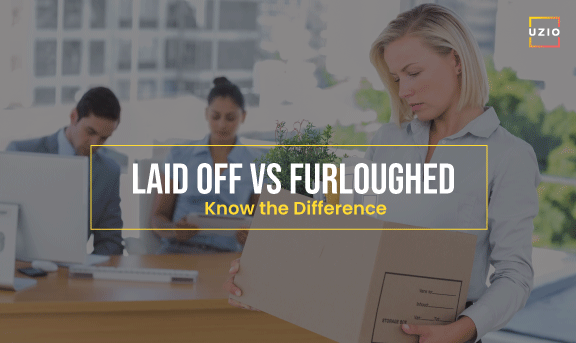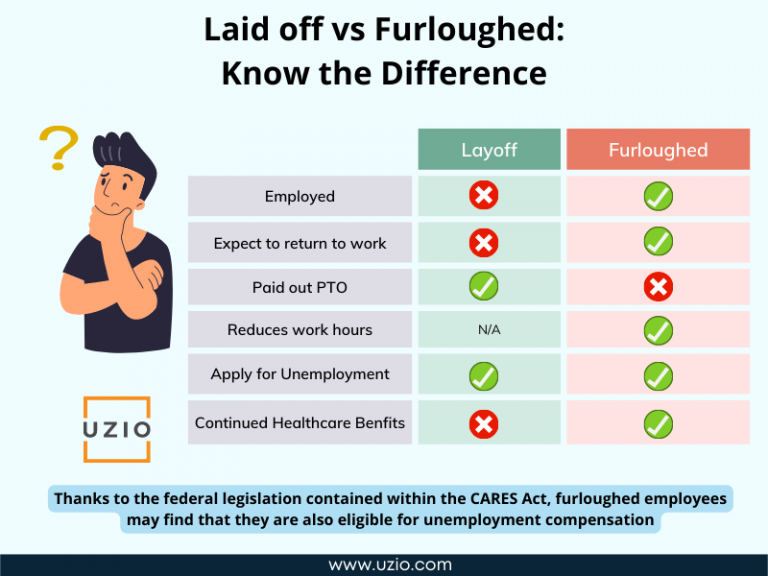
Laid Off vs Furloughed: Know the Difference
The COVID-19 pandemic crashed the world economy, leaving companies of all sizes to consider cost-cutting measures as a way to sustain themselves. In an effort to remain afloat, many organizations around the world chose to furlough or lay off their employees. While being “laid off” is a familiar term for most people, many aren’t aware of the ways it differs from a furlough. Let’s go over these two terms.
- A layoff refers to an employee termination for reasons unrelated to his/her work performance. In this case, the employee holds no responsibility for their termination (unlike being fired). After being laid off, the workers are no longer employees of said company, so they lose all of their benefits and protections.
- A furlough is a mandatory (but temporary) leave of absence. Unlike a layoff, the employee is expected to eventually return to work. Furloughs are usually used when employers are running low on funds but don’t want to terminate their employees. Furloughed staff are technically still employees; as such, they retain both their jobs and their benefits.
Collecting Unemployment
It’s widely known that laid-off employees can collect unemployment insurance. However, thanks to new federal legislation contained within the CARES Act, furloughed employees may find that they are also eligible for unemployment compensation. When laid-off employees request unemployment benefits, the State requires that they produce evidence proving that they’ve been actively searching for work. Since furloughed employees technically still have jobs, they are exempt from this requirement.
Healthcare Benefits
Since furloughed employees are still employed by their company, they maintain their group health coverage. Some companies may pay for the employee contributions; others may ask workers to repay them when they return to work. Of course, these opportunities are only available to furloughed employees. Since laid-off employees are no longer employed, they aren’t eligible for healthcare benefits provided by a business’s group healthcare plan.
Terms of a Furlough
The specific terms and conditions of a furlough will vary from employer to employer. Furloughs generally have a time limit, but they always consist of unpaid time and can reduce the hours, days, or weeks an employee works.

Duration of a Furlough
The length of a furlough will vary depending on the employer. The employer may consider many different factors when deciding the duration of a furlough, such as how to maintain operations with limited (or a lack of) revenue. Furloughs aren’t designed to discriminate against certain employees; rather, furloughs are generally distributed evenly among employees to keep individual hardship to a minimum.
Layoffs may be the right option for companies who want to permanently reduce their workforce, but it’s important to consider the repercussions of layoffs. Rehiring costs, the loss of valuable employees, and low company morale are all common side-effects of company-wide layoffs. On the other hand, furloughs don’t involve permanently dismissing employees, so rehiring costs, loss of employees, and negative effects on company morale will be minimal. Still, the duration of a furlough will have a great effect on the overall effectiveness of this strategy. Employees who are furloughed for a long period of time are much more likely to quit anyway.
If you’re considering a furlough or layoff for your company, it’s important to weigh the pros and cons of each option (for both the company & the employees) before making a decision.





